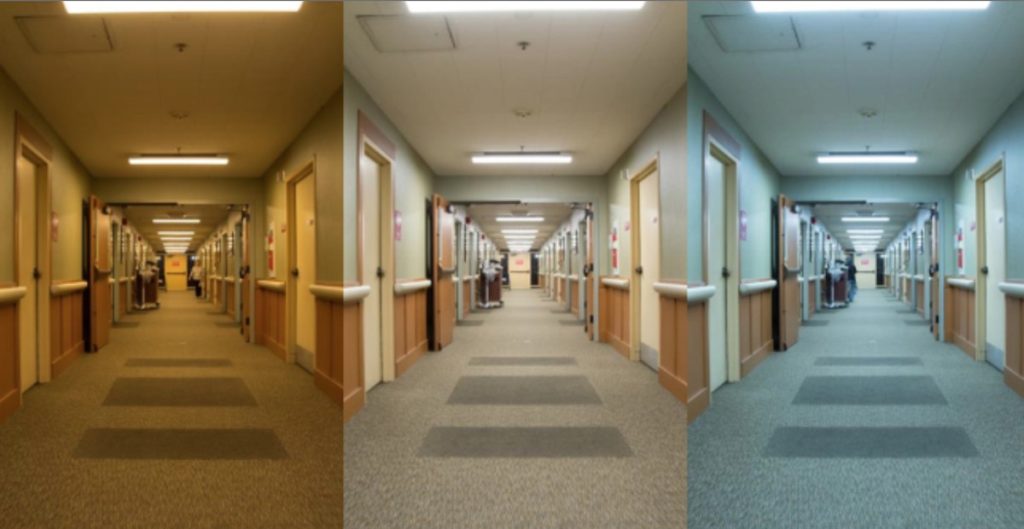

The number of sleep disturbances experienced by residents in a California nursing home were cut by half when their facility installed tuned LED lighting, a new study has found.
Tuned lighting fixtures can mimic natural lighting over the course of a day and night. Daily light fluctuations are known to affect human sleep rhythms and behaviors.
The operator of ACC Care Center, a 99-bed nursing home in Sacramento, installed tuned lighting in several of its hallways as part of an energy-saving collaboration with the city’s utility district. The installation reduced previously high light levels to intensities known to be more suitable for adults in their 80s. Administrators programmed the system to vary light levels throughout the day.
Researchers from the Brown University School of Public Health then randomly assigned corridors to one of two lighting conditions. Over a four-month period in 2018 and 2019, 63 residents were exposed to either tuned LED lighting or to the static fluorescent-like light conditions.
On average, residents experienced 3.6 nighttime sleep disturbances when exposed daily to standard, static lighting. In contrast, they experienced 1.8 sleep disturbances when exposed to the tuned lighting, reported Rosa Baier, managing director of the university’s Center for Long-Term Care Quality and Innovation.
Lighting fluctuations have been tied to behavior changes in people with dementia. But there was no observable difference in agitation among residents with dementia during the study period.
Sleep disturbance places eldercare facility residents at higher risk for a range of poor health outcomes; from physical and cognitive decline to depression, frailty, morbidity, and mortality, Baier and colleagues wrote. Prior research has found that nursing home residents typically receive too little light during the day and too much at night.

“Tuned lighting may be a low-risk intervention to improve sleep and should be considered by seniors housing leaders when undertaking new construction or retrofitting LED fixtures in existing buildings,” the authors concluded. Many operators are already doing this to save energy and costs, they added.
Full findings were published Monday in Seniors Housing and Care Journal.




